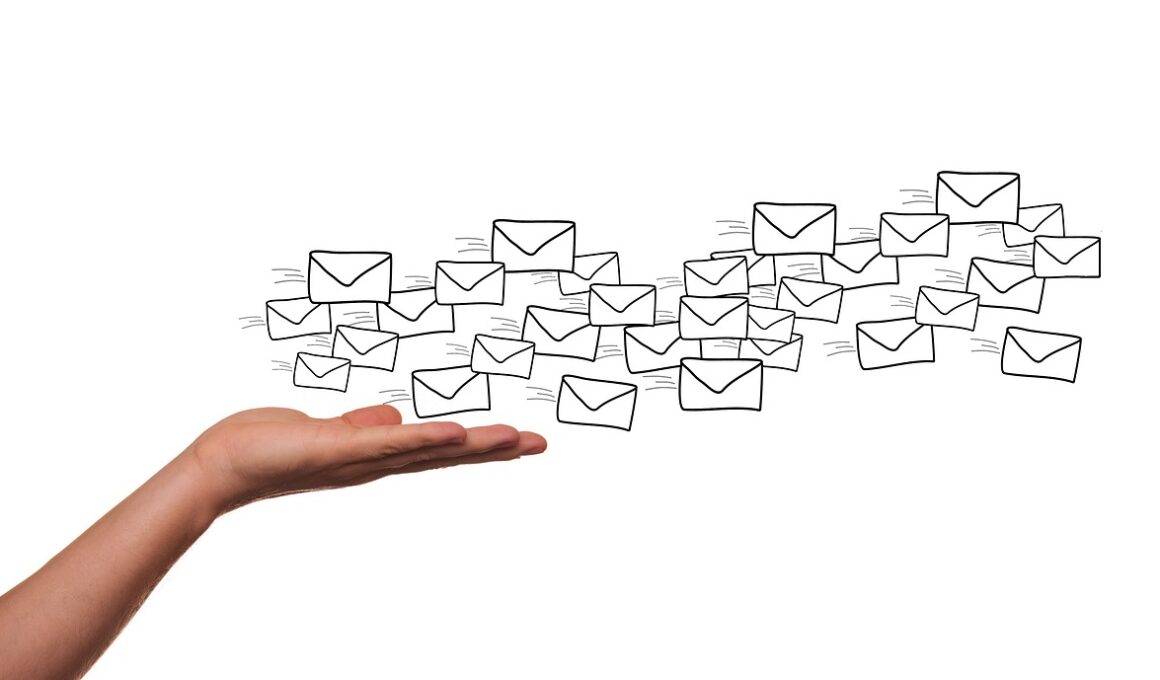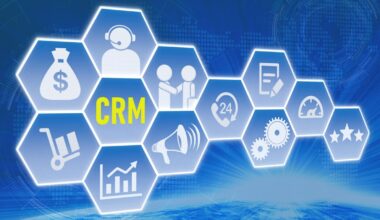Effective Timing and Frequency in Email Campaigns for Growth
Email marketing serves as a powerful tool for driving growth, but its effectiveness is significantly influenced by timing and frequency. To ensure optimal engagement, businesses should strategically plan when to send their email campaigns. Analyzing customer behavior can dictate the best times to reach out, enhancing open rates and click-throughs. Factors like your audience’s time zone, daily routines, and preferences play a crucial role. Studies suggest that sending emails during weekday mornings, specifically between 10 AM to 11 AM, tends to yield higher engagement rates. It is essential to segment your audience for personalized outreach. Not every customer engages at the same time, and tailored timing can make a world of difference.
Moreover, consistency in your email campaign frequency matters just as much as determining optimal times. Regularly connecting with your audience helps maintain awareness and relevance, but overdoing it can lead to subscriber fatigue. A cleverly designed schedule, perhaps weekly or bi-weekly, aligns with your audience’s expectations. To determine appropriate frequency, analyze past engagement metrics; this allows for adjustments while keeping subscribers captivated. An essential part of your strategy lies in maintaining quality content over sheer quantity. Implementing A/B testing shows you what resonates best with your subscribers and helps refine your timing and content. Understandably, a well-timed email with valuable content must tread the fine line between informative and intrusive.
Strategies to Optimize Email Timing
To optimize email timing, businesses need to invest time in understanding their audience’s preferences. Conduct surveys or gather feedback to identify suitable times for engagement. Using analytics tools to assess when previous emails achieved the highest engagement rates can prove invaluable. Analyzing these metrics also aids in segmenting your audience based on engagement times, allowing for targeted approaches tailored to each segment. Moreover, consider time-sensitive content that encourages immediate interaction, such as limited-time offers or event promos. Implementing countdown timers in your emails can create a sense of urgency that drives quick responses.
Utilizing calendar events and holidays to inform your email campaigns is another powerful strategy. Aligning your marketing with seasonal events establishes a flow: retail promotions during peak shopping periods can significantly improve response rates. Similarly, personalized emails that resonate with specific occasions or milestones in the subscriber journey sustain a meaningful relationship. Evaluate historical data during similar campaigns to measure effectiveness. Marketers should leverage tools like A/B testing and automated services to facilitate improved timing and engagement. Combining these strategies maximizes the likelihood of meeting, and even exceeding, expected outcomes. Overall, informed timing leads to better relationships with subscribers.
Creating an Email Schedule
Establishing an email schedule becomes essential for sustained growth. This framework ensures that subscribers receive consistent communication without feeling overwhelmed. To develop your schedule, assess the content you plan to send while considering important dates or events relevant to your audience. Design your campaign to reflect these schedules, prioritizing high-engagement times for important announcements or promotions. Consider documenting your email calendar to visualize content flow. Additionally, implement reminders for consistent frequency to keep your campaigns on track, which builds brand recognition over time.
Another vital aspect to consider when creating your email schedule is aligning with the broader marketing plan. Ensuring cohesion between email marketing and other channels enhances overall message consistency across platforms. Cross-reference your content calendar with social media posts and advertisements to maximize exposure. Integrating various messaging also allows for diverse eye-catching campaigns across channels. Leverage holidays and themed events to attract attention. Crafting unique emails around special occasions or trending topics resonates well with subscribers, ensuring that your campaigns remain captivating and timely.
Analyzing Campaign Results
Analyzing campaign results provides insights into the effectiveness of your timing and frequency strategies. Utilizing metrics such as open rates, click-through rates, and conversion rates enables marketers to fine-tune their efforts. Comprehending these analytics aids in identifying which times and frequencies yield the highest results. Consider employing platform-specific tools to gather comprehensive data; many email platforms provide analytics tailored specifically for their service. This insight can guide future campaigns, optimizing timing for improved engagement and growth, ensuring you maximize potential with your strategy.
Ultimately, the landscape of email marketing constantly evolve, making ongoing analysis crucial for sustained success. Regularly revisiting your strategies can reveal patterns and trends you may not have initially recognized. Keeping up with industry standards allows marketers to align their strategies with current best practices. Remember, flexibility is essential; experimenting with timing and frequency ensures you respond to your audience’s changing preferences effectively. A well-timed approach can lead to significant growth, enhancing not only your engagement rates but also your overall brand perception within your target market.


